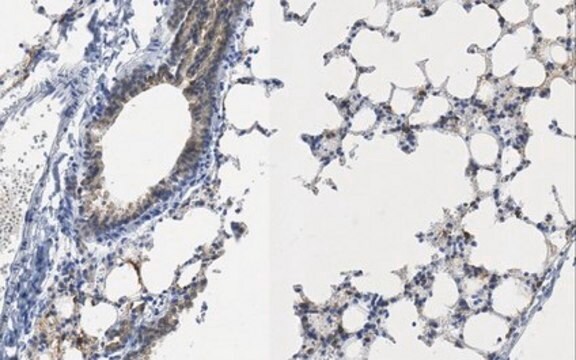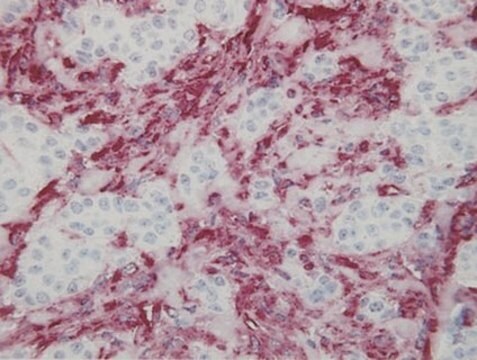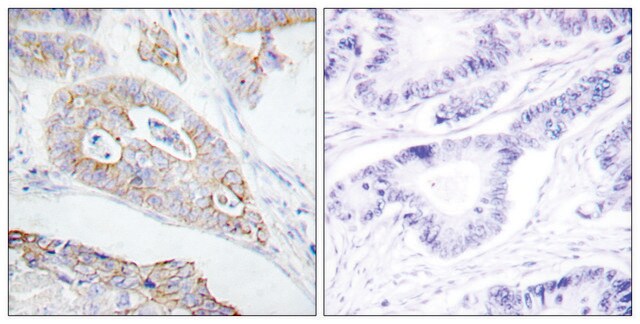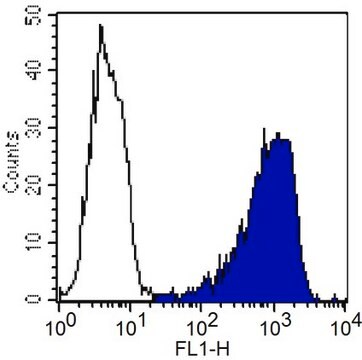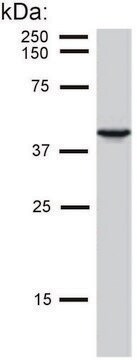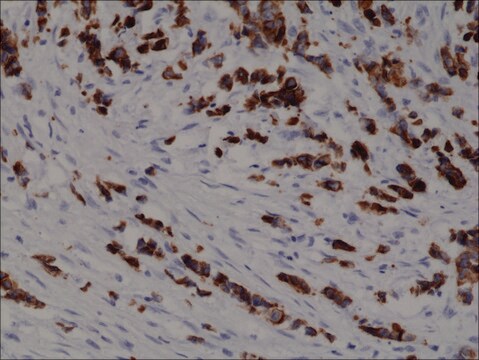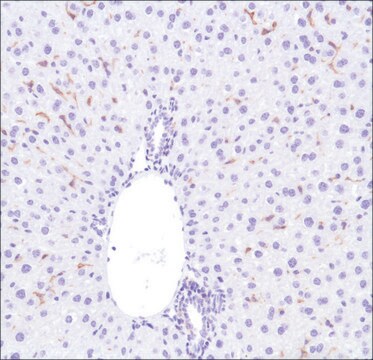MAB3238
Anti-Cytokeratin 19 Antibody, clone RCK108
clone RCK108, Chemicon®, from mouse
Sinonimo/i:
Anti-CK19, Anti-K19, Anti-K1CS
About This Item
Prodotti consigliati
Origine biologica
mouse
Livello qualitativo
Forma dell’anticorpo
purified antibody
Tipo di anticorpo
primary antibodies
Clone
RCK108, monoclonal
Reattività contro le specie
human
Produttore/marchio commerciale
Chemicon®
tecniche
flow cytometry: suitable
immunocytochemistry: suitable
immunohistochemistry: suitable (paraffin)
western blot: suitable
Isotipo
IgG1κ
N° accesso NCBI
N° accesso UniProt
Condizioni di spedizione
dry ice
modifica post-traduzionali bersaglio
unmodified
Informazioni sul gene
human ... KRT19(3880)
Descrizione generale
Cytokeratin 19 (molecular mass 40 kD) is a marker of simple epithelia. Cytokeratin 19 has been found in mesothelial and mesothelioma cells, and in ovarian cysts, cystadenomas, and ovarian carcinomas. It has been shown to be present in the basal layer of non-keratinizing stratified squamous epithelia such as the oral cavity and the ectocervix. Cytokeratin 19 has also been found in adenocarcinomas of the lung and in tumor cells of pulmonary metastases.
It has been reported that cytokeratin 19 can be found in the ductal cells of normal pancreas and in pancreas cancers. It was found that ductal cells of normal pancreas express a number of cytokeratins including cytokeratin 19, whereas acinar cells of normal pancreas also express numerous cytokeratins but not cytokeratin 19. Thus it is determined that pancreas cancers consistently express certain cytokeratins including cytokeratin 19, as do normal ductal cells, which indicates that pancreas cancers may originate from normal ductal cells.
Specificità
Immunogeno
Applicazioni
Cell Structure
Cytokeratins
Immunohistochemistry: 1:100-1:200 on frozen and paraffin embedded tissue (after treatment with pepsin or trypsin) sections.
Immunocytochemistry: 1:100-1:200
Flow cytometry: 1:100-1:200.
Optimal working dilutions must be determined by the end user.
Stato fisico
Stoccaggio e stabilità
Altre note
Note legali
Esclusione di responsabilità
Non trovi il prodotto giusto?
Prova il nostro Motore di ricerca dei prodotti.
Raccomandato
Codice della classe di stoccaggio
12 - Non Combustible Liquids
Classe di pericolosità dell'acqua (WGK)
WGK 2
Punto d’infiammabilità (°F)
Not applicable
Punto d’infiammabilità (°C)
Not applicable
Certificati d'analisi (COA)
Cerca il Certificati d'analisi (COA) digitando il numero di lotto/batch corrispondente. I numeri di lotto o di batch sono stampati sull'etichetta dei prodotti dopo la parola ‘Lotto’ o ‘Batch’.
Possiedi già questo prodotto?
I documenti relativi ai prodotti acquistati recentemente sono disponibili nell’Archivio dei documenti.
Articoli
This page shows the long-term culture and in-plate staining protocols using the CellASIC ONIX Microfluidic platform.
Il team dei nostri ricercatori vanta grande esperienza in tutte le aree della ricerca quali Life Science, scienza dei materiali, sintesi chimica, cromatografia, discipline analitiche, ecc..
Contatta l'Assistenza Tecnica.